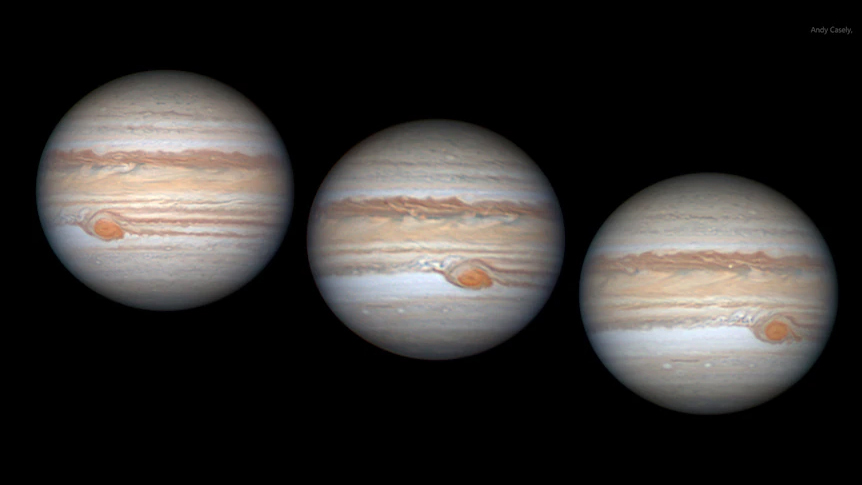Like the rings of Saturn, Jupiter’s Great Red Spot is one of the most famous sights in the solar system.
How long the Spot has existed is unknown, but observations from as early as the 17th century indicate that it may be at least nearly 400 years old. But the Spot is, as is now known, a stupendous cyclone – big enough to swallow Earth whole – so it cannot be a permanent feature of the turbulent Jovian atmosphere.
Indeed, some astronomers have recently thought that they were seeing the first signs of the Spot’s imminent dissolution: it has shrunk by half since the first clear observations in 1870. But, like Mark Twain, reports of its death now seem premature. In fact, its winds – at its edge, twice as intense as a Category 5 cyclone – are actually picking up.

The Spot has been visibly changing in other ways.
“It is becoming less cigar-shaped and more circular,” said the study’s lead author, astrophysicist Mike Wong of the University of California, Berkeley.
“If that trend just continues … then by 2035 to 2039 we may see it become fully circular.”

In more recent years, it’s had some company: another gigantic storm appeared nearby in 2016-17. In 2019, astronomers around the world noticed fragments of the Spot flaking off.
“When we processed up the images, it was really obvious there were bits coming off it.
“We haven’t really seen anything like that before, or since.”
To figure out what was going on, Dr Wong and his colleagues turned to the Hubble Space Telescope.
They analysed the movement of cloud features taken one Jupiter day — 10 Earth hours — apart in a series of high-resolution images taken between 2009 and 2020.
The observations showed the east-west width of the spot was shrinking by 1,900 kilometres a year.
Even when you’re a storm several times the diameter of Earth, a couple of thousand kilometres of shrinkage is not insignificant. At the same time, winds outside the Spot have increased to about 370 kilometres per hour. The Spot is trapped between bands of storms, above and below it, each rotating in the opposite direction around Jupiter’s atmosphere. It’s thought that the action of these smaller storms drifting against the Spot are what caused the “flaking” event.
Instead, it was caused by a series of smaller storms drifting across the top of the red spot.
“The surface events on the spot weren’t really threatening to break apart the [red spot], because it was much bigger and deeper and more organised than that,” said Dr Casely, who was recognised in the paper.
ABC Australia
Which is quite a relief to those of us who like to watch the skies and have grown quite fond of the Spot, Saturn’s rings, and other easily observable astronomical phenomena.
It’s somewhat comforting to know that although these awe-inspiring wonders of the Solar System will not last forever, at least they’ll still stick around for our lifetimes.
Please share this article so that others can discover The BFD









